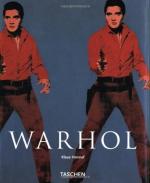|
This section contains 2,951 words (approx. 10 pages at 300 words per page) |

|
Warhol was a central protagonist in a social drama that tried to make the 1960's look like another Age of Innocence. A childlike, gum-chewing naïveté inflects his visions of electric chairs and the ripped bloody bodies dangling from car wrecks; it merges with the pornographic lusting in so many of his films to touch them with an almost sweet aesthetic anodyne. Like that of the classic décadent, his aesthetics is the narcotic to a sense of damnation; unlike that of the décadent, his aesthetics is that not of a rarified connoisseur but displays the chintzy joys of American naïveté. (pp. 11-12)
The hinge of redemption is death. And so is Warhol's central theme finally death. He is an artist whose glamour is rooted in despair, meditating on the flesh, the murderous passage of time, the obliteration of the self, the unworkability of ordinary living...
|
This section contains 2,951 words (approx. 10 pages at 300 words per page) |

|


